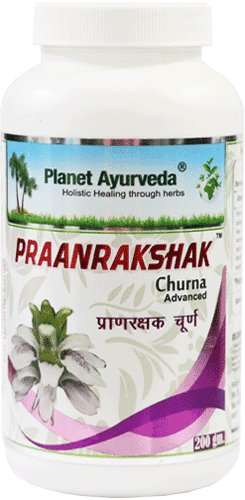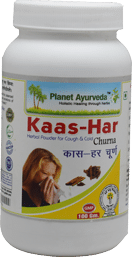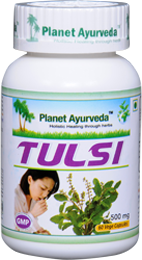
Rajayakshma can be called as the king of diseases. According to Hindu mythology, the Moon that can be called as the king among the satellites of the earth was afflicted by a curse of Brahma. Pulmonary tuberculosis is an age old disease described in Vedic Medicine as ‘Yakshma’. Later on, in Ayurveda it earned a prefix and found a way into the mythology as ‘Rajayakshma’. In Atharvaveda, involvement of ojas has been demonstrated and linked with Rajayakshma. Yakshma normally spreads from one person to another like the flight of birds.
In Rajayakshma, Dhatukshaya (tissue emaciation or loss) is universally accepted as one of the main reasons to initiate pathogenesis. There is irreversible metabolic dysfunction (Dhatwagninasana), out of which rasa (tissue-fluid), rakta (blood), mamsa (muscle), meda (adipose tissue) and sukra (generative tissue) are lost. Ultimately, deterioration of immunity, which is known as ojokshaya in Ayurveda, is evident. In tuberculosis, starting from deterioration of immunity, sukra, meda dhatus to rasa dhatu is lost preceding each other, which is known as Pratilomakshaya and is an unusual metabolic change.
In modern era, Rajayakshma can be correlated to Tuberculosis. Though there is a difference in the pathogenesis of Rajayakshma and Pulmonary Tuberculosis, the clinical picture of both is quite similar. But it is very difficult to compare Rajayakshma and Pulmonary Tuberculosis due to a wide difference in the fundamental principles of both pathies i.e. threebiological humours and infection by micro-organisms.
Causes
- Kshaya (diminishing if dathu)
- Sahasa (by excessive stress and strain)
- Vegasandarana (suppressing the natural urges)
- Vishamashana (opposite to dietary regimen).
Pathogenesis
All above factors lead to deficiency of rasadhatu resulting in consumption. The manifestation of Rajayakshma is Ekadasharupa which involves Tridosha (three biological humours and Dhatu (tissue). For any type of disease manifestation, Dosha is the main cause. Rajayakshma is manifested by the vitiation of Vata and Kapha Pradana Tridosha (three biological humours dominated by vata and kapha).
Madhyama Roga Marga constitutes the Head, Heart, Bladder and such other Marma Sthana, Asti Sandi etc. Vata and Kapha Dosha gets aggravated with Pitta dosha and spreads all over the joints of the body and other Marma Sthana, Urdwa, Adha and Tiryak Bhaga and obstruct the Srotas thus leading to an improper Dhatupaka. So there is Dhatu Kshaya found in Shosha disease. In Madhyama Rogamarga vyadhi, the disease affected in Hridaya, Basti, Shira Pradesha, Marma and Asti. In Shosha, these sites affected simultaneously, so this Rajayakshma is the best example for Madhyama Roga Marga.
Components of Pathogenesis are narrated below:-
- Humour: Kapha dominated three biological humours
- Vata (vyana, samana, udana, prana and apana)
- Pitta (pachaka and sadhaka)
- Kapha (kledaka, bodhaka and avlambaka)
- Tissues (all are involved)
- Allied tissues (blood vessels and joint)
- Waste products (urine and stool)
- Waste products of tissues (pitta, kapha, sweat, hair, nails and hair follicles)
- Fire: Digestive, tissue and five-elements
- Ama: Toxins due to poor function of fire
- Channels of circulation: Annavaha, rasavaha and shuktavaha. Later on, all the Channels of circulation are involved.
Clinical Features
- The aggravated biological humours when enter the joint, results in yawing, pain in the body and pyrexia or fever.
- The aggravated biological humours when enters the stomach, results in chest diseases and anorexia.
- The aggravated biological humours when enters the throat, results in throat-irritation and hoarseness of the voice.
- The aggravated biological humours when enter the channel of circulation related to the respiratory tract, results in rhinitis and dyspnoea.
- The aggravated biological humours when enter the head, results headache.
- Pain in costal and scapular region
- Burning sensation in palms and soles
- Pyrexia
- Anorexia
- Dyspnea
- Cough
- Pain in visceral organs
- Hematemesis
- Tracheal shift
Prognosis
- Curable in strong person
- Incurable in weak person
Herbal Remedies for Ayurvedic Treatment of Rajayakshma (Tuberculosis)
1. Praanrakshak Churna
Ingredients present in Planet Ayurveda’s Praanrakshak Churna have tonic and immunomodulator actions. They help in increasing CD4 lymphocytes count, thereby enhancing the immunity. Albizzisa lebbeck and Tylophora asthmatica are potent ingredients in the formulation. Adathoda vasica is well known for bronchodilator and mucolytic properties.
Dose : One teaspoonful can be taken twice or thrice a day.
2. Kaas-Har Churna
Planet Ayurveda’s Kaas-har Churna is good remedy for cough, upper respiratory catarrh, chronic bronchitis, asthmatic bronchitis and bronchial asthma, anorexia, pleurisy and burning sensation in the extremities.
Dose : One teaspoonful can be taken twice or thrice a day.
2. Tulsi Capsules
Planet Ayurveda’s Tulsi capsule is wonderful for boosting the immunity, which is compromised in Rajayakshma.
Dose : 1-2 capsules can given, thrice a day.



